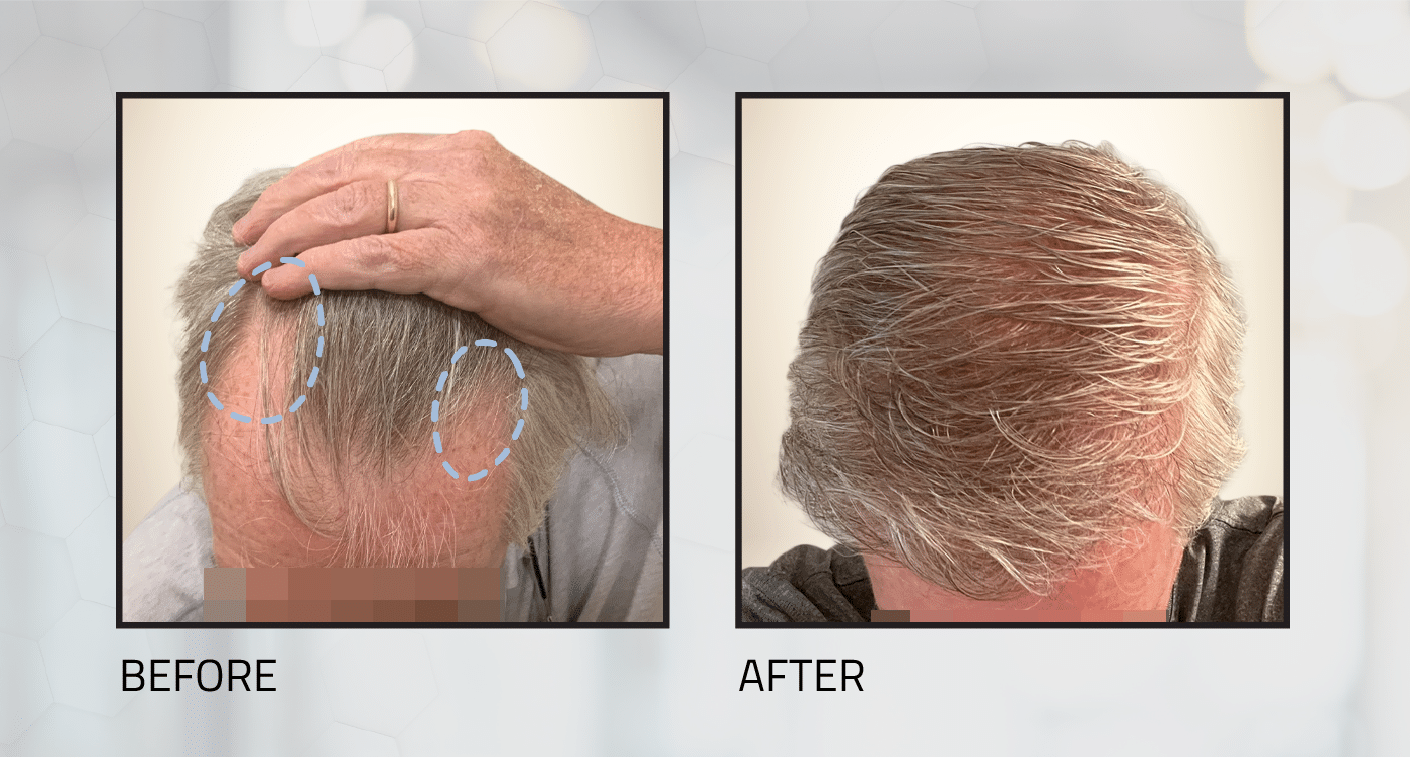If you’ve noticed your hair is thinning, you’ve probably looked into medical solutions to help restore a more youthful, full head of hair.
There are a lot of treatment options out there for those in various stages of hair loss, including topical and oral treatments as well as surgical hair restoration.
And while topical and oral treatments like minoxidil and finasteride can help younger people and those in the early stages, those with more advanced hair loss will usually need a hair transplant to restore that missing coverage and fullness.
Luckily, the surgical treatment options for hair loss have greatly improved since the early days, and they’re only getting better.

Newer Hair Restoration Methods and Better Results
Today’s clients seeking hair restoration no longer have to worry about the big linear scars and unnatural results of older methods like FUT strip hair transplants.
On the contrary, modern hair restoration methods like FUE and DHI can give you a totally natural look.
Even better, there are newer long hair DHI and FUE hair transplant techniques that let you walk out of your procedure looking totally normal, with no shaved areas and usually a completely concealed transplant site.
Also known as Shave-less or No-Shave DHI or FUE hair transplants, they require virtually no recovery downtime, cause minimal scarring, and produce truly transformative results.
With interventions like Shave-less DHI hair restoration, no one even has to know you’ve had a hair transplant.
So what exactly are these cutting edge hair restoration techniques, and who can benefit from them?

What is DHI Hair Transplantation?
DHI (direct hair implantation) is an advanced type of FUE (follicular unit excision) hair transplant.
FUE is performed by extracting individual follicular units from the donor hair area using a specialized punch tool.
The surgeon then re-places these grafts into the new location of desired hair growth.
The process is precise and allows for proper angling and spacing, allowing the surgeon to create a tailored and natural look—even right at the hairline.
DHI is an improvement on this technique, because the surgeon uses a special implanter pen when placing the harvested grafts.
With the original FUE surgical technique, the surgeon must create an incision at the transplant site before placing each individual graft.
The DHI implanter pen lets surgeons skip this step—it makes the incision as it places the harvested follicle, all in one go.
This important difference makes the DHI procedure faster and even more precise than regular FUE, allowing for levels of skill and artistry not previously possible before.
The grafts also often take better due to the minimal trauma at the implant site.
DHI is simply one of the best hair transplant methods available, and it’s available as either a shaved or Shave-less procedure.

Who Can Get a DHI Hair Transplant?
Most people who would be eligible for a regular FUE hair transplant would be considered good candidates for DHI.
Good candidates for a DHI hair transplant should:
- Be healthy enough to have a minimally invasive outpatient procedure
- Have good donor sites available for grafting, with sufficient density and thickness
- Not have an autoimmune disorder that attacks the hair follicles
- Have underlying conditions like diabetes, hypertension, and autoimmune disease under control
The optimal DHI candidate has moderate to severe hair loss caused by androgenetic alopecia, also known as male or female pattern baldness.
According to the American Hair Loss Association, male pattern baldness is responsible for over 95% of hair loss in men, making DHI a great choice for the majority of men suffering from thinning hair.
DHI can also be used for hair loss from other causes, including female pattern baldness and traction alopecia from tight braids, weaves or hair coverings—the most common causes of thinning in women.
Ideal DHI candidates are usually over 25, but there is no really maximum age if the other qualifying factors apply.
Of course, only a hair restoration expert can tell you for sure if you’re a good candidate for DHI, so seeing a professional should be your first step if you’re considering it.
Want to Know If DHI Hair Restoration Might Be Right for You?
Schedule a consultation today! You can call us at 678-845-7521, or click here to book online.
North Atlanta Hair Restoration is one of the leading hair restoration clinics in the US, and our founder and lead surgeon, Dr. Daniel A. Danyo, is an experienced practitioner of both regular and long hair DHI.
You’ll talk to the doctor himself during your initial consultation, and he and his skilled surgical team perform every surgery themselves—no outsourcing to clinical techs or robots, just decades of experience, medical expertise and care.
Don’t wait to find out if this cutting-edge technique is just what you’ve been waiting for—contact us today!
Frequently Asked Questions About DHI
Can women have DHI?
Many women suffering from hair loss can have a DHI hair transplant.
DHI works well for women with female pattern baldness, alopecia caused by traction or injury, and many other common causes of hair thinning in women.
Do I need to shave my head for DHI?
In the majority of cases, DHI can be performed as a Shave-less or No-Shave procedure.
Talk to a qualified hair restoration surgeon to find out if long hair DHI might be right for you.
Does DHI work for curly or ethnic hair?
Yes! DHI is actually a favored choice for curly or textured hair because it protects the hair follicles so well.
Unlike straighter hair, curly hair follicles are more widely spread apart, so they are more prone to bending and damage during the regular FUE implantation process.
With DHI, however, the pen fully encases the follicular unit, protecting individual hairs during placement and ensuring they’re situated properly for healthy growth.


